Posted: May 27th, 2014 | No Comments »
Of course 2014 is the centenary of the start of World War One (and I don’t need to plug the Penguin China WW1-China series of e-books again surely – but, oh well, here we go) and of course 110 years since the start of the Russo-Japanese War (which I’ve blogged about here). One other anniversary comes in October – that of the bizarre Dogger Bank Incident – never heard of it? Here’s what strangely happened…..
The Dogger Bank incident (also known as the North Sea Incident, the Russian Outrage or the Incident of Hull) occurred on the night of 21/22 October 1904, when the Russian Baltic Fleet mistook some British fishing boats in the Dogger Bank area of the North Sea for the Imperial Japanese Navy (rather a long way from home!) and fired on them. Russian warships also fired on each other in the chaos of the melée.. Three British fishermen died and a number were wounded. One sailor and a priest aboard a Russian cruiser caught in the crossfire were also killed. The incident almost led to war between Britain and Russia. Seems the Russian ships were steaming through the North Sea to eventually get to Port Arthur to fight the Japanese. Thinking the Japanese Navy had found out about this and decided to steam to the North Sea first for a sneak attack they got jittery and sunk some British fishing smacks!
Quite a bizarre story and a weird bit of naval history and an odd footnote to the Russo-Japanese War….More on Wikipedia here
For those who like anniversaries, and naval history, the Dogger Bank incident happened on the 99th anniversary of Nelson’s victory at Trafalgar

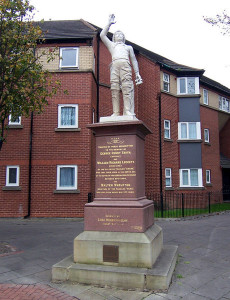 A statue erected in Hull (the British fishermen’s home port) by public subscription to the memory of George Henry Smith (skipper) and William Richard Legget (third hand), of the steam-trawler CRANE, who lost their lives through the action of the Russian Baltic Fleet in the North Sea, 22 October 1904, and Walter Whelpton, skipper of the trawler MINO, who died through shock, May 1905.
A statue erected in Hull (the British fishermen’s home port) by public subscription to the memory of George Henry Smith (skipper) and William Richard Legget (third hand), of the steam-trawler CRANE, who lost their lives through the action of the Russian Baltic Fleet in the North Sea, 22 October 1904, and Walter Whelpton, skipper of the trawler MINO, who died through shock, May 1905.
Posted: May 25th, 2014 | No Comments »
An excellent little exhibition of photographs of Liverpool’s Chinese community is running at the moment at the city’s Open Eye Gallery. The most interesting (to ChinaRhymers anyway) will be the Bert Hardy photographs from 1942 that were a commission for Picture Post (a couple below). However, the feature never ran so they’ve not been widely seen before. More on the exhibition here…

Chinese seamen outside a hostel in Liverpool, 1942

The Shanghai Restaurant on Liverpool’s Nelson Street in 1942
Ebb and Flow is an audio, visual survey of the history and changes that have taken place within the oldest Chinese community in Europe, curated by Jill Carruthers.
Drawing from the rich selection of photographic prints preserved in the Open Eye Gallery Archive, the show looks at the physical and architectural transformations of Liverpool’s Chinatown, as well as documenting the establishment and development of the local Chinese community.
Included in the show are works by Bert Hardy who photographed the Chinese seamen that came to the city from Shanghai on the Blue Funnel Shipping Company vessels in 1940s. He recorded their lives, living conditions and recreation as well as Liverpool at the time.
Four decades on and the Chinese community was well established in a new area of Liverpool, relocated to Nelson Street, after the May Blitz during WWII. British photographer Martin Parr documented Chinatown in the 80’s, exploring the restaurants, hair salons, Chinese supermarkets and community centers that were popular at the time.
Alongside these historical images, this exhibition also includes two contemporary works exploring the Chinatown that Liverpool is home to now.
Liverpool based artist duo John Campbell & Moira Kenny, The Sound Agents, have been funded by Heritage Lottery Fund to record Liverpool Chinatown Oral History, creating an audio visual digital archive of interviews, personal documents and photographs.
UK based photographer Jamie Lau has been commissioned to create a new body of work, looking at the Chinese community as it is now. Lau will visually explore the notion of being isolated in a city full of people, where human interaction may only happen on a base level, passing each other in the street, in shops and restaurants, like ships in the night.
Posted: May 23rd, 2014 | No Comments »
#10 -Â
Lou Tseng-tsiang (Lu Zhengxiang),who officially led the Chinese delegation to Paris, subsequently left the diplomatic service and became titular abbot of the Abbey of St. Peter in Ghent and met Tintin creator Hergé….Betrayal in Paris now on Amazon UK and Amazon US….
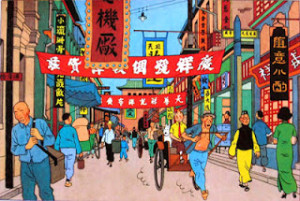
In the 1930s Lou, a long time Catholic, was based at a monastery in Loppen and became friendly with a young man by the name of George Remi, better known to the world as the cartoonist Hergé, the creator of Tintin. These early contacts by Hergé with Lou, and some other Chinese, meant Hergé developed a deep interest in China. See, Harry Thompson, Tintin: Hergé and his Creation, (London: John Murray, 2011).

Posted: May 22nd, 2014 | No Comments »
#9 – The Chinese delegation was the youngest in Paris in 1919….Betrayal in Paris now on Amazon UK and Amazon US….
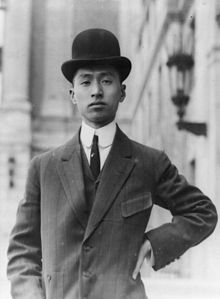
The Chinese were the youngest delegation in Paris. Wellington Koo (above) was just 32! Indeed very youthful compared to many others (none of the main members of the Chinese party was over fifty) and were seen as more fun, more entertaining than others; most were Western-educated and at ease in Parisian and high diplomatic society.

Posted: May 21st, 2014 | No Comments »
#8 – Wellington Koo was a champion university debater while his adversary, Baron Makino was a master Go player….Betrayal in Paris now on Amazon UK and Amazon US….
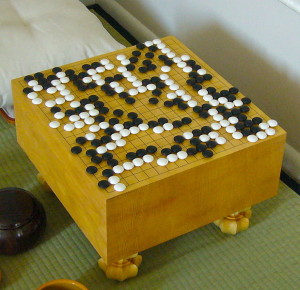
Japan’s lead negotiator in Paris was Baron Makino, reputedly a master of go, an ancient Chinese game of strategy. Koo, China’s lead negotiator, had studied abroad, at Columbia in New York, where he had been an outstanding student and a key member of the university debating team.

Posted: May 20th, 2014 | No Comments »
#7 – The Chinese delegation’s major negotiator Wellington Koo found time to fall in love….Betrayal in Paris available on Amazon UK here and Amazon US here…

While in Paris Wellington Koo swiftly pursued and courted a Peranakan sugar-cane heiress, the Chinese-Indonesian Oei Hui-lan (Huang Huilan), a noted beauty and style-setter. She had sent him a picture of herself to attract his attention; in return Koo flooded her with chocolates and orchids.

Posted: May 19th, 2014 | No Comments »
#6 – George Morrison (“Morrison of Peking”) was officially part of the Chinese delegation in Paris….

The well known Australian journalist George Morrison (‘Morrison of Peking’), the former Times correspondent in China was an official “foreign adviser” to the Chinese in Paris. But he went down with bad kidneys, subsisted on a diet of boiled fish and rarely surfaced, leaving for England and dying soon afterwards. He spent the entire conference stashed away in the MacMahon Palais Hotel.

Posted: May 18th, 2014 | No Comments »
#5 – Several later-to-be-famous Chinese artists were studying in Paris at the time and demonstrated against Japan’s occupation of Shantung….
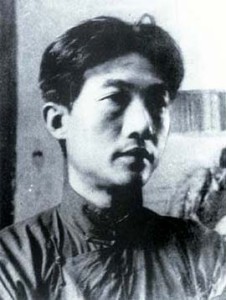
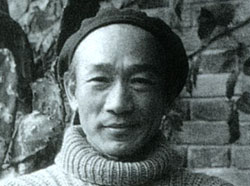
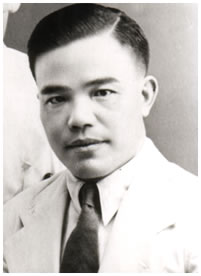
Chinese art students in Paris in 1919 were an especially radicalised group and included several artists who went on to become well known in China. Xu Beihong (top) had arrived in Paris in 1919 to study oil painting and drawing at the École nationale supérieure des Beaux-Arts and was to become one of the most prominent artists in China. Lin Fengmian (middle), arriving shortly after Xu, became a pioneer of modern Chinese painting for his blending of Chinese and Western styles. The Fujian-born artist Ong Schan Tschow (Weng Zhanqiu) (bottom) arrived in Paris in 1919 after winning a Chinese government scholarship to the École nationale supérieure des Beaux-Arts.

 A statue erected in Hull (the British fishermen’s home port) by public subscription to the memory of George Henry Smith (skipper) and William Richard Legget (third hand), of the steam-trawler CRANE, who lost their lives through the action of the Russian Baltic Fleet in the North Sea, 22 October 1904, and Walter Whelpton, skipper of the trawler MINO, who died through shock, May 1905.
A statue erected in Hull (the British fishermen’s home port) by public subscription to the memory of George Henry Smith (skipper) and William Richard Legget (third hand), of the steam-trawler CRANE, who lost their lives through the action of the Russian Baltic Fleet in the North Sea, 22 October 1904, and Walter Whelpton, skipper of the trawler MINO, who died through shock, May 1905.










